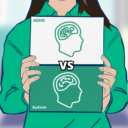Key takeaways: With QbCheck, ADHD diagnoses can be made longitudinally over 2 visits, after a complete data review….
Blog
Blog
What the NHS ADHD Taskforce report means for clinicians
Summary – What clinicians need to know The NHS England ADHD Taskforce has released its Interim Report on…

DSM-5 and ADHD: What changed, what’s missing, and what clinicians must know
The Diagnostic and Statistical Manual of Mental Disorders (DSM) was first introduced in the 1950s. It went through…

UK’s largest virtual healthcare service providing consistent high-quality ADHD care with QbCheck
ADHD 360 is the UK’s largest virtual healthcare service specializing in ADHD diagnosis and treatment. Its primary goal…

What does the gold standard of ADHD diagnosis and treatment look like in 2025 and beyond?
In 2025, the gold standard of ADHD diagnosis and treatment is evolving, shaped by updated DSM-5 criteria, new…

The Child Health Integrated Response Pathway (CHIRP) and implementing an objective psychometric tool (QbCheck) to improve ADHD pathway efficiency in the Bay of Plenty, New Zealand
The CHIRP model (combining paediatrics, child development services and child and adolescent mental health) came into effect in…

QbCheck as an objective measure of ADHD symptoms to ensure optimal medical treatment in a paediatric (0-17y) population
The CHIRP model (combining paediatrics, child development services and child and adolescent mental health) came into effect in…

Remote objective ADHD assessment to monitor treatment effects as part of UK-based virtual healthcare service, ADHD 360
ADHD 360 is the largest virtual healthcare service in the United Kingdom specializing in the diagnosis and treatment…

Accelerating ADHD treatment with QbCheck: How one patient found answers in weeks, instead of years
Access to comprehensive ADHD testing and follow-up treatment management is limited with traditional models involving months of waiting,…

ADHD vs Autism in clinic settings: red flags and co-diagnosis tips
More than half of adults with ADHD also live with another mental health condition, and almost 40%…

